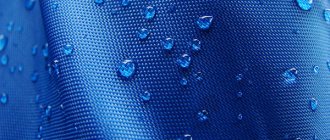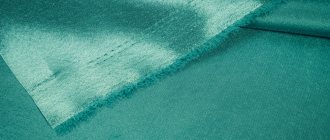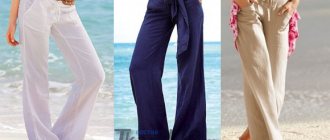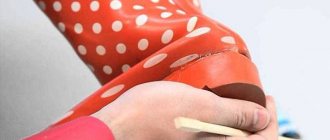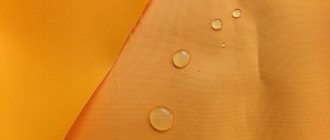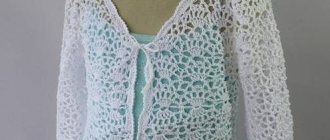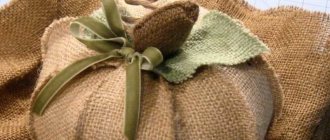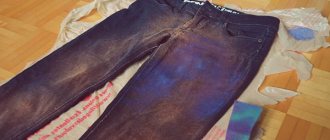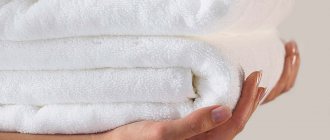Rhinestones are an imitation of gems used to decorate clothing, various wardrobe items, and interior design. The use of brilliant splendor will help make the most ordinary thing bright. They vary in size, shape, color. Various materials are used for their manufacture. The choice depends on the purpose of their use. There are rhinestones:
- acrylic;
- glass;
- metal.
According to the method of attaching rhinestones to the material, they are distinguished:
- sewn;
- adhesive (cold fixation, hot melt, rhinestone tapes).
How to choose glue
Stones can be sewn on (with holes for thread) and glued, the latter are divided into cold fastening crystals (glue must be used) and thermal rhinestones (the lower surface is covered with a dry mixture that melts at high temperatures).
Rhinestones are an imitation of precious stones that can be used to decorate clothes and other things.
Most often, to attach stones with cold fastening, they use:
- Epoxy resin: a universal product that can be used on any surface except glass. However, epoxy often leaves marks and takes several hours to dry completely;
- Special adhesive mixtures: are distinguished by convenient packaging (often with a sharp spout through which a small amount of substance is squeezed out), suitable composition that does not spoil fabric and stone, and good results.
If there is a layer of dry glue on the back side, these are hot-melt crystals.
Do not use glue for rhinestones on fabric that contains acetone or acetic acid - they will have a bad effect on the appearance of the product.
It is important to note thermal rhinestones: how to glue them to fabric is described below. To work with them you will need a heating device.
Glue "Moment-Crystal"
Transparent, easy to apply, hardens quickly, sets in a few seconds, but stretches a little, after which it will be impossible to change the position of the rhinestone or remove it without damaging the fabric. When a drop is applied, a film is formed on its surface: when installing the crystal, it may tear, and the glue will leak out and may land on a nearby surface.
The disadvantages include an unpleasant odor: if you work at home for a long time, it can cause a headache.
“Moment” is a common version of glue that can be bought in any store.
Glue for rhinestones Danscouture (USA)
It is water-based and can be used when working with any type of fabric, except leather, and stones with a flat bottom. The substance is non-toxic, does not deform the product, and becomes transparent when dried. Often used to decorate the costumes of dancers, figure skaters, gymnasts, etc.
You might be interested in How to make a beautiful fabric angel doll on your own
Swarovski CG 500-35
Epoxy adhesive from the USA, widely used when working with metal, wood, glass, porcelain and other surfaces, except fabric. When working with fabric, glue is not recommended as it leaves stains.
E6000 CRAFT
The substance is also produced in the USA. Most often used for gluing Swarovski crystals as it does not affect their surface. It is odorless, tolerates any water (both fresh and sea), and can be machine washed.
E6000 CRAFT adhesive is great for Swarovski
Note! The glue forms a strong, elastic connection that does not damage the fabric. Its structure is slightly viscous, which makes it easy to remove excess during operation and eliminate threads that appear between drops.
Fericyl Fabric Glue
The glue is produced in India. The base is odorless epoxy resin, which is easy to apply and does not stretch. The substance is white in color and becomes transparent after drying. Thanks to the spout of the bottle, applying the glue is quite convenient - this can be done even on a vertical surface.
It hardens within a few seconds, during which you can correct the position of the stone. The glue dries completely within a day (to speed it up, you can warm up the fabric with a hairdryer); you can wash the item only after a week in cold water.
Fericyl Fabric Glue is another good glue option.
Test one - "CARPET"
Each sample was slightly stretched and fixed onto a small paint roller and rolled for five minutes with pressure and periodic slipping over a piece of carpet (my greetings to rhythmic gymnasts).
Samples came out without loss:
- No. 1 E6000 CRAFT;
- No. 3 Fevicryl Fabric Glue;
- No. 7 Hot-melt rhinestones Preciosa (HotFix).
No. 2 Moment Crystal suffered the greatest losses.
How to quickly glue rhinestones to fabric
Gluing stones to fabric is easy. In general, everything happens in several steps:
- You need to apply a little glue to the fabric and wait a few seconds for the substance to absorb a little. There should be enough glue to capture the entire rhinestone - it should protrude slightly beyond the surface of the stone, “grasp” it.
Important! The thicker the fabric, the more glue you will need.
- It is better to carefully pick up the crystal with tweezers, a thin plastic stick with wax at the end, or tongs, or a toothpick. The stone must be placed in the center of the drop and press slightly on it.
- If desired, you can apply glue to the crystal itself, but this is more difficult and requires some skill. It is important to remember that the glue sets quickly: if you place the pebble incorrectly, when you wipe it off, a mark will remain on the surface.
There are several ways to apply decoration to clothing.
When working with stretch clothing (knit, nylon or lycra), part of the clothing needs to be stretched and held a little before applying glue. Thin material, for example, organza, generally does not hold stones well, and you should not decorate natural or artificial leather.
You may be interested in this: Simple patterns of denim jackets for sewing yourself
Test Two: Extreme Stretch
Each knitwear sample was stretched as much as possible in different directions until it stopped without violating the integrity of the material. Imitation of the event if, during operation, the product got caught on something and was pulled strongly or was quickly and carelessly put on.
Samples continue to live:
- No. 1 E6000 CRAFT;
- No. 7 Hot-melt rhinestones Preciosa (HotFix).
They also performed well under such inhuman treatment:
- No. 5 UHU Power glue;
- #4 Crystal Hobby.
There is almost nothing left from No. 2 Moment Crystal and No. 3 Fevicryl Fabric Glue.
How to glue rhinestones with an iron
How to glue thermal rhinestones to fabric at home? To do this, you will need to use an iron, which will heat the layer already on the crystal.
You can stick them in 2 ways:
- If the crystals are arranged in a group and are approximately the same size, you only need to place them on the fabric and iron them on top through gauze. The iron temperature should not be too high (otherwise the surface of the stone may be damaged) or too low (the glue will not melt). The type of fabric should also be taken into account.
- This option is more complicated. You need to transfer the pattern onto the paper and smooth the transparent fabric over it. Then place the iron with the heating side up, place the crystals on it with the adhesive side up and turn it on. When the glue melts, use a toothpick or needle to transfer the stones one at a time onto the fabric, laying out the pattern, and lightly press them for better adhesion.
An iron will be required to glue the thermocrystals.
Important! To avoid getting burned, it is better to wrap your finger with a thin cloth or gauze.
Gluing thermal rhinestones with an applicator
A rhinestone applicator is also called a hot-melt applicator or a soldering iron. This is a small heating device that can be used instead of an iron on finicky fabrics, such as velvet.
The advantages of the applicator include:
- Small size, compact: you can hold the fabric in your hands and stick the crystals directly without using an iron or table;
- Ease of use: the device heats up quickly, the set includes several attachments;
- Accurate result: thanks to its shape, the soldering iron heats the rhinestone pointwise and does not damage the fabric around it. They are also more convenient for gluing decor in hard-to-reach places.
Working with an applicator is easier and more accurate than using an iron.
You can attach it in 2 ways:
- Lay out the pattern on the fabric immediately, heat the soldering iron and apply it to the stones one by one. When heated, they will immediately attach;
- Heat the pebbles one by one with a thermal applicator and transfer them to place.
Gluing with adhesive tape
This method is used if you need to transfer a large pattern, which would be difficult and time-consuming to attach one stone at a time. The process occurs in several steps:
- The rhinestones are laid out on adhesive tape with the adhesive side up;
- The film is transferred to clothing and then ironed;
- The film is removed.
You might be interested in Sewing short skirts with and without patterns
Scotch film helps transfer a large picture
This method saves effort and time, but it has a significant disadvantage: the stones are fixed in a large group, some may not grab and come off.
Caring for products with rhinestones and crystals
Clothing decorated with rhinestones requires more careful and careful care than ordinary clothes, but there is nothing complicated about it:
- It is better to wash such items by hand in cool water;
Caring for decorated items is easy
- It is better to use a liquid product for delicate materials; conditioner is not recommended - it has a bad effect on the properties of the glue;
- You should not soak clothes: the constant presence of water will have a bad effect on the connection;
- You can dry it however you like, depending on the fabric used, but it is better to hang and remove things carefully so that the crystals do not get caught or fall off;
- When ironing, avoid direct contact between the heated iron and the rhinestones, using a thin cloth.
You can only iron clothes through the fabric
. Clothes decorated with Swarovski crystals or cheaper options look beautiful, but to get a good result, you need to properly glue the rhinestones to the fabric. Depending on the type of stones, you can use one of the glue options, a heated iron or a special soldering iron.
Water tests
And then after friction and stretching - water procedures! I soaked the samples in a cup without detergent for 10 minutes (my nod to synchronized swimming).
There is not a single rhinestone left on samples No. 2 Moment Crystal, No. 3 Fevicryl Fabric Glue and No. 4 Crystal Hobby. None. On samples No. 3 and No. 4, the glue absorbed the water, became white again and released all the stones, leaving no marks on the foil covering. Express removal of all inlay! Although, maybe someone will be interested in such a feature.
At Moment, although the glue did not dissolve, all the rhinestones still fell off.
The rest sailed several programs and did not “lose face.” These are samples No. 1 textile glue E6000 CRAFT, No. 5 UHU Power glue and No. 7 hot-melt rhinestones (HotFix) from Preciosa.
Wash
And my last mockery of the remaining samples is my favorite washing machine. According to tradition: each sample goes into its own sock and into a gentle wash cycle.
Only No. 7A hot-melt rhinestones (HotFix) showed themselves to be ideal. He did not part with a single stone! A very impressive result.
- No. 1 E6000 CRAFT also showed itself worthy. Only on the last round I lost two rhinestones;
- No. 5 UHU Power glue has lost more than half of its composition.
At this stage I again regretted that I could not find the Gutermann HT2. It seems to me that, given the demand, he could contribute to the treasury of positive reviews. Well, maybe next time, if there are a few more interesting names of glue.

